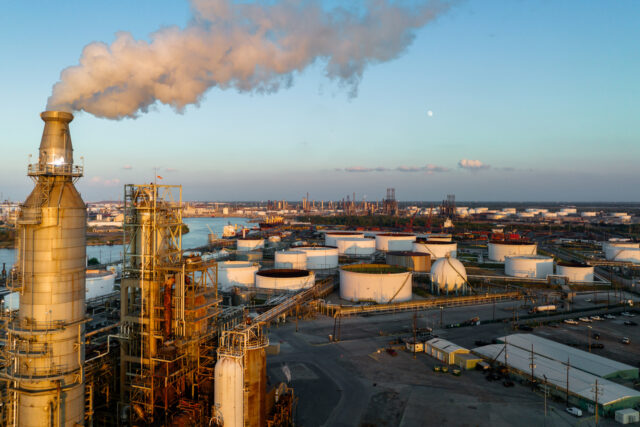Texas factory production was up in September after four straight months of contraction, a report from the Federal Reserve Bank of Dallas indicated on Monday.
The Texas Manufacturing Outlook Survey’s production index, a key measure of state manufacturing conditions, jumped nearly 20 points to a reading of 7.9. That’s the highest reading in a year.
Most business executives responding to the survey said their output was unchanged. At 54.3 percent, this is just above the long-term average of 50 percent.
This month 26.8 percent said production was up from a month earlier and 18.9 percent said production was down. That’s the largest share reporting growth since January and the lowest share reporting falling production since May 2022.
The new orders index remains negative but pushed up 11 points to -5.2. That indicates falling demand but at a slower pace. This is the best reading for orders since January of this year.
Capacity utilization rebounded into positive territory, rising from -3.7 to 7.8, the first positive reading since March. The shipments index moved up to near zero after declining to 15.8 in August. At -1.1, the shipments index is at the highest reading since December.
Despite the improvement in production, orders, shipments, and utilization, perceptions of broader business conditions worsened in the month. The general business activity index ticked down 1.1 points, which the Dallas Fed described as “nearly unchanged,” t0 -18.1. The company outlook index improved by nine-tenths of a point to -17.5.
One manufacturer in the chemical manufacturing industry blamed China’s recent economic weakness for a the poor outlook.
“China’s economic woes are believed to be much worse than reported, driving down exports, while internal pressures on building and construction, automotive and general merchandise through inflationary pressures and particularly the cost of financing is slowing growth domestically. As a basic materials company, this is hitting us on all fronts and slowing business dramatically,” the executive told the Dallas Fed.
Another executive pointed to rising oil prices.
“The outlook is dismal with oil prices increasing and interest rates strangling many sectors, including ours,” said an executive in vehicle manufacturing.
Labor market indicators suggest employment growth picked up in September—as did the workweek. The employment index jumped nine points to 13.6, which the Dallas Fed noted is above the series average of 7.9. That is the best reading since December of last year. The share of firms who said they are growing their payrolls rose to 23 percent, the highest since March.
The wages and benefits index remained highly elevated at 34.8. Raw materials prices rose again this month, indicating that disinflation is no longer pushing down cost inflation. THe finished good index was slightly positive, suggesting little price growth.
The forward-looking indicators were mixed. The future production index remains positive and rose for the month. But the future business activity index fell deep into negative territory.

COMMENTS
Please let us know if you're having issues with commenting.